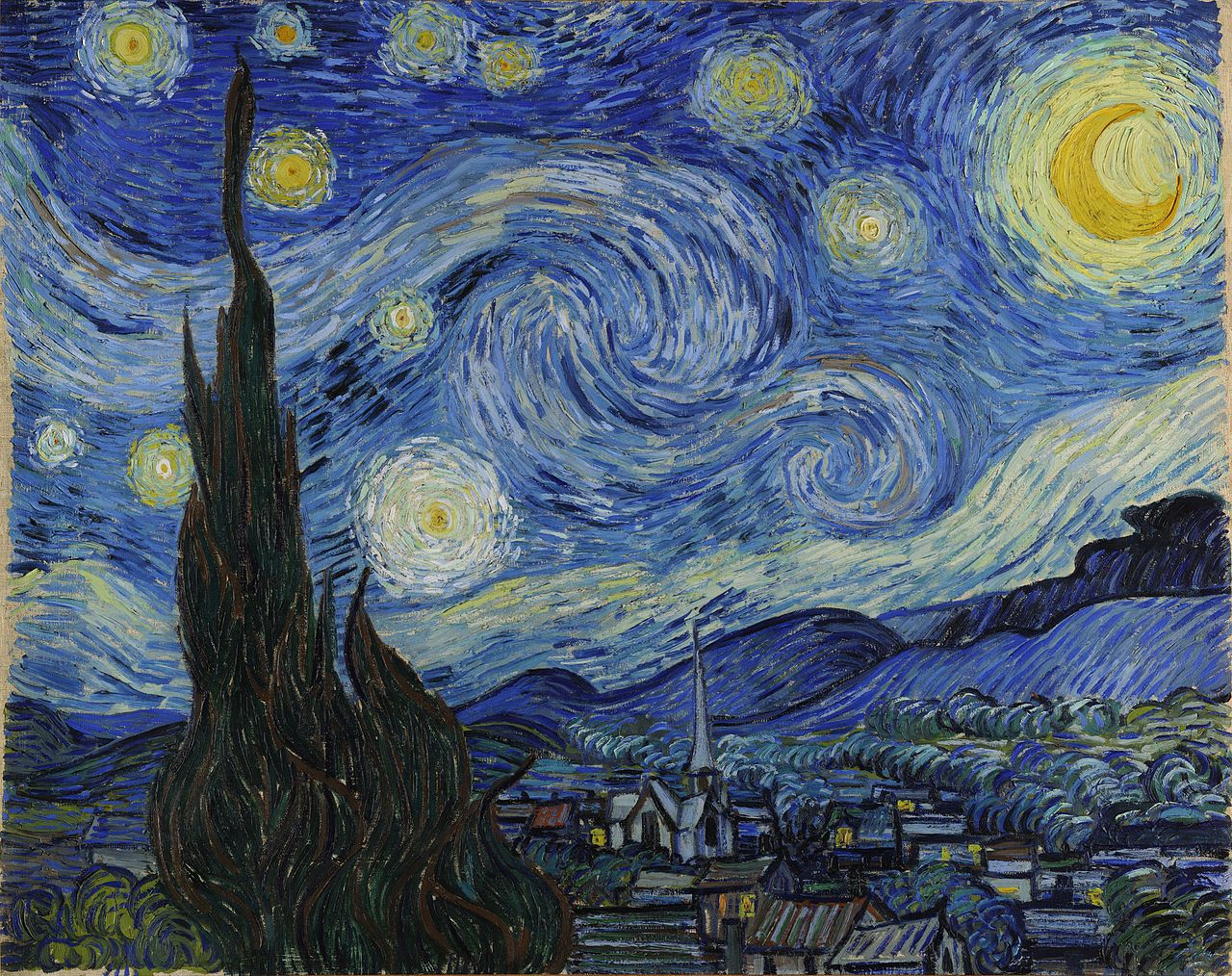
Is the starry night a subtle suicide note? About 12 months after executing this painting, Van Gogh shot himself in his abdomen with a revolver. He died two days later in the small French town of Auvers-sur-Oise and to this day his death has been labeled as suicide. While dissecting this painting is not easy, what is immediately evident is the degree of emotion that emanates from the dynamic and energetic strokes of paint. The unrestrained circular brushstrokes that denote the night sky exhibit a fundamental departure from Van Gogh’s previous landscapes which were more naturalistic. This is a work of art that was painted in patient hurry with frenzied immediacy. As the canvas is still visible in places, the tumultuous sky that governs most of the canvas is interest first with the moon and stars that emanate light brighter than they would in reality. The moon in particular seems to be pulsating with the intensity of fire. This is not a landscape rendered from real life. The painting is based on a similar view Van Gogh had from the window of his room at the mental asylum at Saint-Paul Asylum, in Saint-Rémy, where he was recovering from depression and a series of mental breakdowns diagnosed as epileptic fits. However, rather than being painted from direct observation this landscape was constructed from memory and feeling and was likely executed in his studio space in the asylum which had no view at all. Indeed, the tranquil small valley featuring small cottages and a church that lies between the cypress tree and the mountains behind, comes purely from Van Gogh’s imagination. The dynamic movement of the swirling clouds that sweep across the night sky is interrupted by two vertical elements. The first, that’s the giant undulating cypress tree, and the second, that of the narrow church Spire. These two elements may just be the crucial key to understanding the paintings likely meaning. The stylized Cypress tree takes up the entire left side of the painting and the fact that it is cut off at the frame implies that it must be rather close to us. It could be read as a symbol of death as cypress trees beside graves in cemeteries. The church is placed in the center of the composition, and it introduces the presence of God. Its inclusion in the painting becomes more significant when we consider that there was no church visible from Van Gogh’s asylum window. So, both the cypress tree and the church Spire reach upwards towards the heaven uniting the tranquility of the man-made village below with the turmoil of the sky above. Could this represent Van Gogh’s desire to transcend from human suffering into the divine world above? After all, in a letter he wants like in death to a train that travels to the stars. With an explosion of color and movement that evoke the spirituality Van Gogh found in nature, Starry Night is famous for advancing the active painting beyond the representation of the physical world that provides us with an insight into the artist’s troubled mind.
